Chinese New Year (also called Spring Festival or Lunar New Year) is the most solemn traditional festival of the Chinese nation. The main content of Chinese New Year traditions is to remove the old and build new ones, worship the gods and ancestors, pray for blessings and drive off disasters. During the Chinese New Year, there are rich and colorful customs, strong New Year atmosphere and family affection, embodying the essence of traditional Chinese culture.
Chinese New Year has a long history of nearly four thousand years and has formed some relatively fixed customs and traditions in its inheritance and development. These Chinese New Year traditions not only enrich the cultural connotations of Spring Festival, but also convey people’s good wishes for the new year. Now let’s take a look at some Chinese New Year traditions and customs, and feel the cultural memory that belongs to Chinese people.
Worshiping the Kitchen God
Chinese New Year usually begins with the ceremony of offering sacrifices to the Kitchen God. It is a traditional custom that has a great influence and is widely spread among Chinese people.
Kitchen God Worshiping is usually held on the 23rd or 24th day of the 12th lunar month. After nightfall, the kitchen range should be cleaned, the old Kitchen God picture should be taken down and burned, and a new one should be pasted on New Year’s Eve. During these two processes, various foods and drinks should be offered to pray for family safety, auspiciousness, and smoothness.
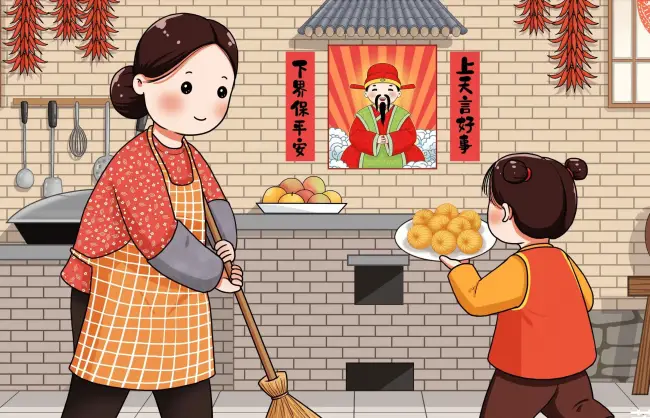
Sweeping Dust
Sweeping dust is one of the Chinese New Year traditions to eliminate the old and promote the new. According to historical records, as early as the period of Yao and Shun, China had a custom of sweeping dust during the Spring Festival, which symbolizes sweeping away all bad luck and misfortune.
From the 24th day of the 12th lunar month, people will start doing a general year-end household cleaning. The whole family will work together to clean the house and courtyard, scrub pots and utensils, wash bedding and curtains, etc. and make the home environment clean as new in order to welcome the Chinese New Year.
At the same time, people will buy for the next year. The process of purchasing all Chinese New Year’s goods, including food, wearing, using, pasting (New Year’s red decorations), gifts, etc., is collectively referred to as Spring Festival shopping.
Putting up Chinese New Year Decorations
Pasting New Year’s red decorations is an essential Chinese New Year tradition, symbolizing blessings and auspiciousness for the coming Lunar New Year.
On the afternoon before the Chinese New Year’s Day, people will put up Spring Festival Couplets, Fortune characters, paper-cutting window decorations, Door Gods, New Year paintings, lanterns, and other red festive elements in their houses to express their longing and expectations for a better New Year’s life, praying for a year of peace and good fortune.
Note: Spring Festival Couplets are a pair of red papers with auspicious poems or blessings on them, used to decorate door frames.
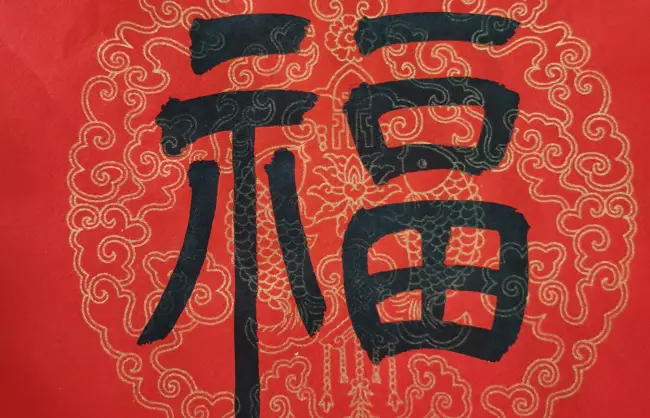
Worshiping Ancestors
Worshiping ancestors on New Year’s Eve is one of the oldest Chinese New Year traditions. The Chinese nation never forgets to worship and express respect and gratitude to their ancestors during traditional festivals. On the day before Chinese New Year, people will set up dishes, pour fine wine, and hold a solemn sacrificial ceremony to remember and honor their ancestors and pray for their blessings. This traditional custom has been passed down from generation to generation.
The forms of ancestral worshiping vary, some go to ancestral temples to pay their respects, while most place ancestral tablets in the main room, display offerings, and then offer incense and kneel in order of seniority.
Staying-up and Having Family Reunion Dinner
Staying-up on New Year’s Eve is one of the most important Chinese New Year traditions. On this night, families gather together to welcome the arrival of the Lunar new year. During the staying-up, the family can make dumplings, have New Year’s Eve dinner, watch the Spring Festival Gala, have heart to heart talks, and spend a warm and happy night together. The lights stay on all night (it is said that this will enrich the wealth of the family in the coming year).
The New Year’s Eve dinner is the most abundant and important family reunion dinner for Chinese people at the end of the year. At the New Year’s Eve dinner, people can taste various delicious dishes such as fish, meat, dumplings and other traditional Chinese foods. As time changes, the ways of eating this dinner as Chinese New Year Celebrations are constantly evolving, but what remains unchanged is the happiness of family reunion.
Setting off Firecrackers
From Chinese New Year’s Eve to the entire Spring Festival period, every household will set off firecrackers and fireworks to add a lively and festive atmosphere. Especially on New Year’s Eve and the first morning of the lunar new year’s day, setting off firecrackers to ward off evil with the crackling sound symbolizes bidding farewell to the old and welcoming the new, as well as receiving blessings.
Typically, the outer and inner layers of a firecracker are both red in color, and after being set off, red scraps of paper cover the ground, forming a bright and festive atmosphere. Setting off firecrackers is a special and interesting Chinese New Year tradition. Welcome to embark on Chinese Festival Tours to experience this unique way of Chinese New Year celebrations.
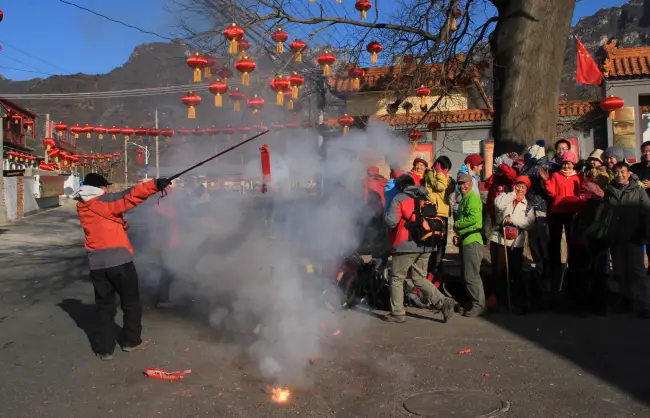
Giving Chinese New Year Red Envelope
Red envelopes, also known as lucky money (压岁钱), are one of the favorite Chinese New Year traditions among children. Every Spring Festival, especially after the New Year’s Eve dinner, elders give red envelopes to younger generations, symbolizing the suppression of evil spirits, blessing peace, and hoping that children will grow up healthy and have good luck in the new year.
With the development of the times, the meaning of red envelopes (lucky money) has gradually become richer, becoming a way of transmitting family affection, friendship, and love.
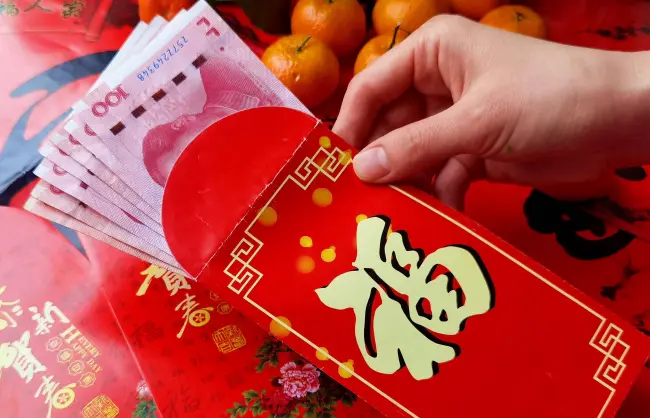
Paying New Year Visits and Greetings
Paying New Year visits while sending greetings is one of the most representative Chinese New Year traditions. On the morning of the first day of Lunar New Year, adults and children put on new clothes and hats, visit relatives and friends, exchange greetings, and express New Year’s wishes.
The Chinese New Year greetings usually start from the family, first paying respects to the elders and wishing them health and longevity. Then, people will bring Chinese New Year gifts to visit relatives and friends. When people meet outside, they also greet each other with smiles on their faces. They usually say: “Happy Chinese New Year!”, “Happy New Year to you!”, etc.
With the development of technology, the way of Chinese New Year celebrations is also constantly evolving. From traditional door-to-door visits to modern ways of paying New Year greetings through phone calls and WeChat, people still maintain this traditional custom. Each warm blessing and auspicious red envelope conveys people’s good wishes and love for their relatives and friends.
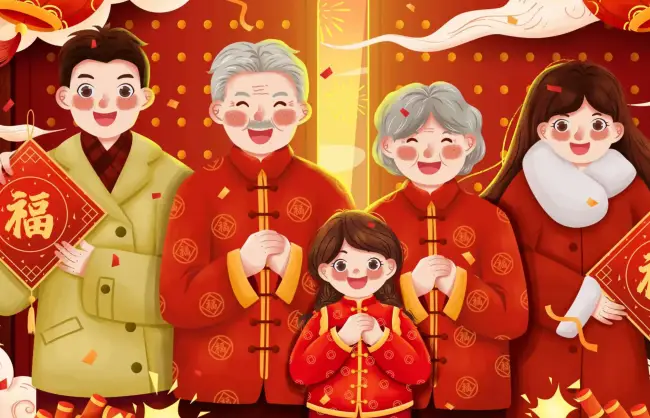
Eating Chinese New Year Food
In most northern regions of China, there is a custom of eating dumplings (饺子) on the morning of the first day of Lunar New Year, which means “the exchange of new and old”. Also, because the shape of dumplings resembles ingots, it symbolizes a good omen of “attracting wealth”. People often put a coin inside dumplings, and whoever eats the coin means very good luck in the coming year.
In southern China, most people have the habit of eating rice cakes – also called Chinese New Year cakes (年糕) and sweet dumplings (汤圆) during the Spring Festival. The taste of rice cakes varies from place to place, symbolizing higher prosperity year after year. Sweet dumpling, which is made of glutinous rice flour, means “happy reunion”. In Kaifeng, Henan Province, people eat both dumplings and sweet dumplings on the Chinese New Year’s Day.
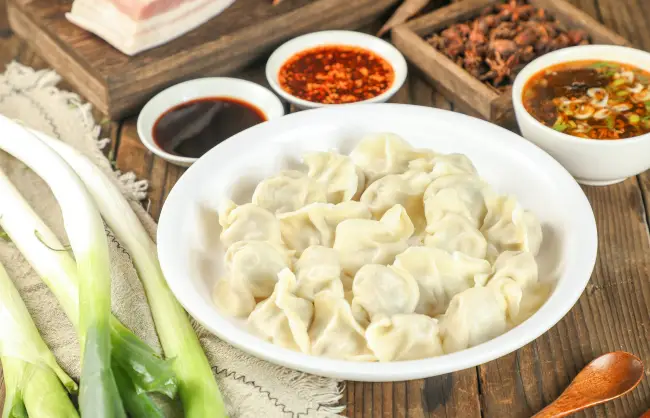
Read More:
Going to Temple Fair and Dragon/Lion Dances
Temple Fair is a distinctive Chinese New Year tradition. You can go to the temple fair in Beijing, Shanghai, Foshan, Taiyuan, and other cities during the Spring Festival. In early days, temple fairs were only grand sacrificial activities, but as time goes by, temple fairs gradually added market trading activities, delicious snacks, and rich entertainment, creating a festive and lively atmosphere.
Dragon and lion dance activities are often held in southern China, symbolizing prayers for good weather, safety, and health. Some places also have the entertainment activity of walking on stilts during the Spring Festival, performing various strange and humorous movements.

These Chinese New Year traditions all carry a profound cultural heritage, embody the resonance of Chinese people’s hearts, and convey their aspirations for a better life in the new year.
Start your China tours to experience traditional Chinese culture more deeply!
Keep Reading:









